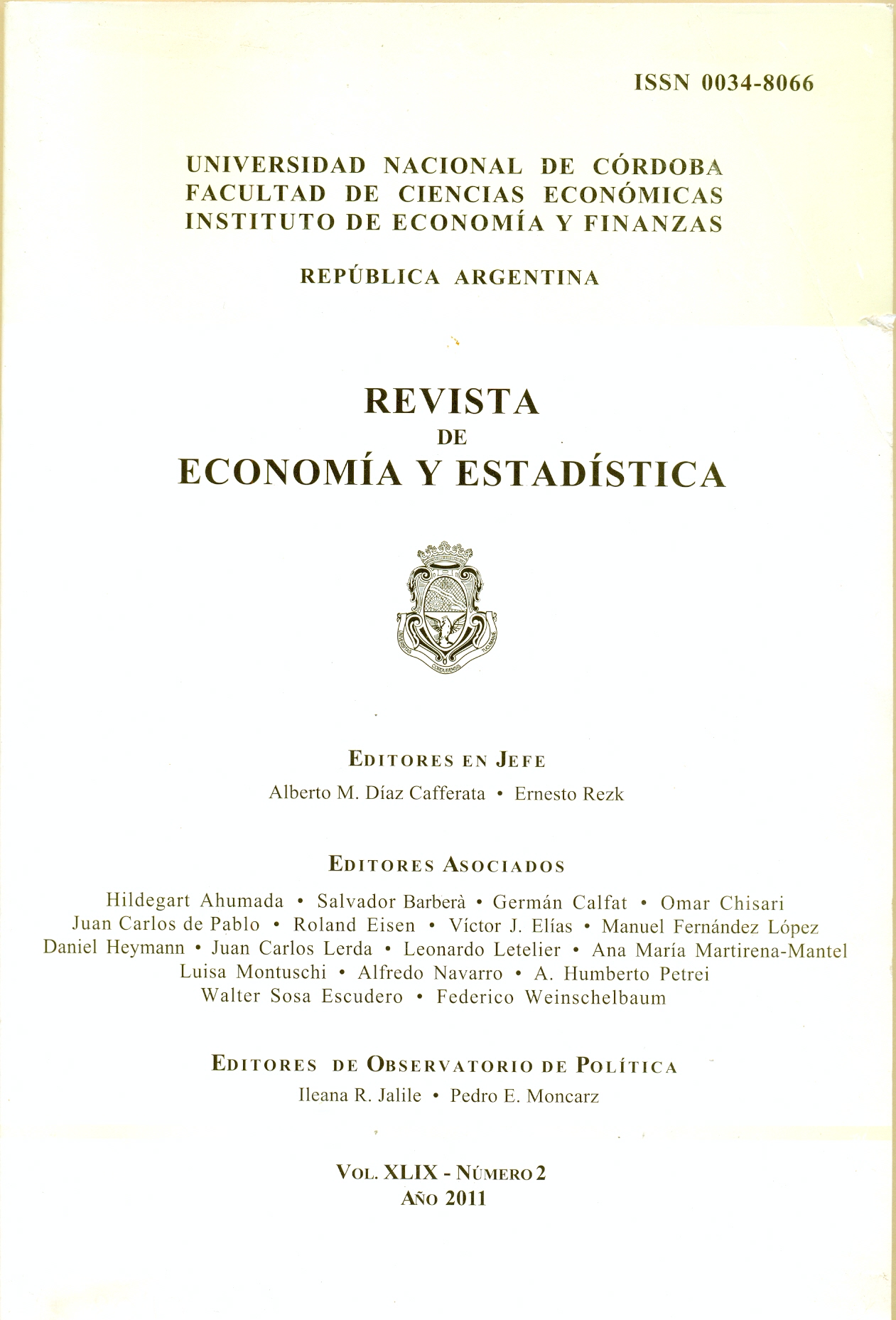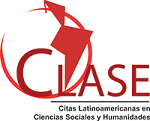Estimation of the subjective valuation of travel and waiting time savings in the city of Cordoba, Argentina.
DOI:
https://doi.org/10.55444/2451.7321.2011.v49.n2.7491Keywords:
transport demand, stated preferences, multinomial logit, value of timeAbstract
This study uses a stated preference survey to estimate a transport mode choice multinomial logit model for commuting trips. The results allowed the estimation of the subjective value of travel time and waiting time savings for commuting workers in Córdoba. It has been proved that improving bus travel time and waiting time, that could be achieved by implementing exclusive bus lanes, could entail significant incentives for bus use and for reducing car and motorcycle use for commuters and could reduce some of the current traffic congestion at rush hours.
Downloads
References
Bates, J. (1980). “Econometric Issues in stated preference analysis”. Journal of Transport Economics and Policy, January.
Bates, J. J. y Terzis G. (1997). “Stated Preference and the "Ecological Fallacy"”, PTRC European Transport Forum, Transportation Planning Methods, vol. II.
Ben-Akiva, M. y Lerman S. (1985). Discrete Choice Analysis: Theory and Application to Travel Demand. MIT Press.
Bierlaire, M. (2003). “BIOGEME: A free package for the estimation of discrete choice models”, Proceedings of the 3rd Swiss Transportation Research Conference, Ascona, Switzerland.
Bierlaire, M. (2009). “Estimation of discrete choice models with BIOGEME 1.8”. Disponible en http://transp-or2.epfl.ch/biogeme/doc/tutorial.pdf .
Bliemer, M. y Rose J. M. (2005). “Efficient designs for alternative specific choice experiments”. Working Paper ITLS-WP-05-04. Institute of Transport Studies. The University of Sydney.
Bradley, M. y Daly A. (1994). “Use of the logit scaling approach to test for rank-order and fatigue effects in stated preference data”. Transportation, vol. 21, n. 2, pp. 167-184.
Brownstone, D. y Train K. (1998). “Forecasting new product penetration with flexible substitution patterns”. Journal of Econometrics, vol. 89, n. 1-2, pp. 109-129.
ChoiceMetrics (2009). “ChoiceMetrics 2009, Ngene 1.0 User manual and reference guide. The cutting edge in experimental design”.
Dhar, R. (1997). “Consumer Preference for a No-Choice Option”. The Journal of Consumer Research, Vol. 24, n. 2, pp. 215-231.
Dhar, R. y Simonson I. (2003). “The Effect of Forced Choice on Choice”. Journal of Marketing Research, Vol. 40, n.2, pp. 146-160.
Dissanayake, D. y Morikawa T. (2010). “Investigating household vehicle ownership, mode choice and trip sharing decisions using a combined revealed preference/stated preference Nested Logit model: case study in Bangkok Metropolitan Region”. Journal of Transport Geography, Vol. 18, pp. 402-410.
Fowkes A. y Wardman M. (1998). “The design of stated preference travel choice experiments: with special reference to interpersonal taste variations”. Journal of Transport Economics and Policy, Vol. 22, n. 1.
Haaijer, M. (1999). Modeling conjoint choice experiments with the probit model. The Netherlands: Labyrint Publications.
Hensher D., Barnard P. y Truong T. (1988). “The role of stated preference methods in studies of travel choice”. Journal of Transport Economics and Policy, Vol. 22, n. 1.
Hensher, D. (1994). “Stated preference analysis of travel choices: the state of practice”. Transportation, Vol. 21: pp.107-133. Kluwer Academic Publishers, Netherlands.
Hensher, D. y Reyes A. (2000). “Trip chaining as a barrier to the propensity to use public transport”. Transportation, Vol. 27, pp. 341-361. Kluwer Academic Publishers, Netherlands.
Hensher, D. (2001). “The valuation of commuter travel time savings for car drivers: evaluating alternative model specifications”, Transportation, Vol. 28, pp. 101-118.
Hensher, D., Rose J. y Greene W. (2005). Applied Choice Analysis. A Primer. Cambridge University Press. Cambridge. UK.
Hojman, P., Ortúzar J. y Rizzi L. (2004). “Internet-Based Surveys to Elicit the Value of Risk Reductions”, Proccedings of the 7th International Conference on Travel Survey Methods, Los Sueños, Costa Rica.
Jara-Díaz, S. y Guevara C. (2003). “Behind the Subjective Value of Travel Time Savings. The perception of Work, Leisure, and Travel from a Joint Mode Choice Activity Model”, Journal of Transport Economics and Policy, Vol. 37, n. 1, 29-46.
Louviere, J., Hensher D. y Swait J. (2000). Stated Choice Methods. Analysis and Application. Ed. Cambridge University Press.
Mackie, P. (2005). “The London congestion charge: A tentative economic appraisal. A comment on the paper by Prud'homme and Bocarejo”. Transport Policy, Vol. 12, n. 3, pp. 288-290.
Marconetti, D. (2008). “Limpieza, tránsito y transporte con mala nota”. La Voz del Interior, 7 de diciembre.
McFadden, D. (1974). Conditional Logit Analysis of Qualitative Choice Behaviour, Frontiers of Econometrics, Zarembka, P. (ed.), Academic Press, New York, pp. 105-142.
Mohring, H. (1999). “Congestion”. En Essays in Transportation Economics and Policy. A Handbook in honor of John R. Meyer, Chapter 6. José Gómez-Ibáñez, William B. Tye y Clifford Winston, eds. The Brookings Institution.
Newbery, D. (2003). “Pricing and congestion: economic principles relevant to pricing roads”. En Cost-Benefit Analysis, Capítulo 13; Layard, R. y Glaister, S. eds., Cambridge University Press.
Prud’homme, R. y Bocarejo J. (2005). “The London congestion charge: a tentative economic appraisal”. Transport Policy, vol. 12, n. 3, pp. 279-287.
Rose, J. M., Scarpa R. y Bliemer M. (2009). “Incorporating model uncertainty into the generation of efficient stated choice experiments: A model averaging approach”, International Choice Modelling Conference, Yorkshire U.K.
Rose, J. M. y Bliemer M. (2004). “The design of stated choice experimentes: The State of Practice and Future Challenges”. Working Paper ITS-WP-04-09. Institute of Transport Studies. University of Sydney y Monash University.
Rose J. M. y Hensher D. (2004). “Handling individual specific availability of alternatives in stated choice experiments”. Seventh International Conference on Travel Survey Methods. Costa Rica.
Rose J. M. y Bliemer M. (2009). “Constructing Efficient Choice Experiments”. Working Paper ITLS-WP-05-07, 2005. Institute of Transport Studies. University of Sydney.
Train, K. (2009). Discrete Choice Methods with Simulation, Cambridge University Press.
Wardman, M. (2004). Public transport values of time. Transport Policy, vol. 11, n. 4, pp. 363-377.
Downloads
Published
How to Cite
Issue
Section
License
Copyright (c) 2011 Juan José Pompilio Sartori, Jorge Mauricio Oviedo

This work is licensed under a Creative Commons Attribution-NonCommercial-NoDerivatives 4.0 International License.
Authors who have publications with this journal agree to the following terms:
Authors retain their copyright and grant the journal the right of first publication of their work, which is simultaneously subject to the Creative Commons Attribution-NonCommercial-NoDerivatives 4.0 International License that allows third parties to share the work provided that its author and first publication in this journal are indicated.
Authors may adopt other non-exclusive licensing arrangements for distribution of the published version of the work (e.g. depositing it in an institutional telematic archive or publishing it in a monographic volume) as long as the initial publication in this journal is indicated.
Authors are allowed and encouraged to disseminate their work via the Internet (e.g. in institutional telematic archives or on their website) before and during the submission process, which can lead to interesting exchanges and increase citations of the published work. (See The Open Access Effect)









